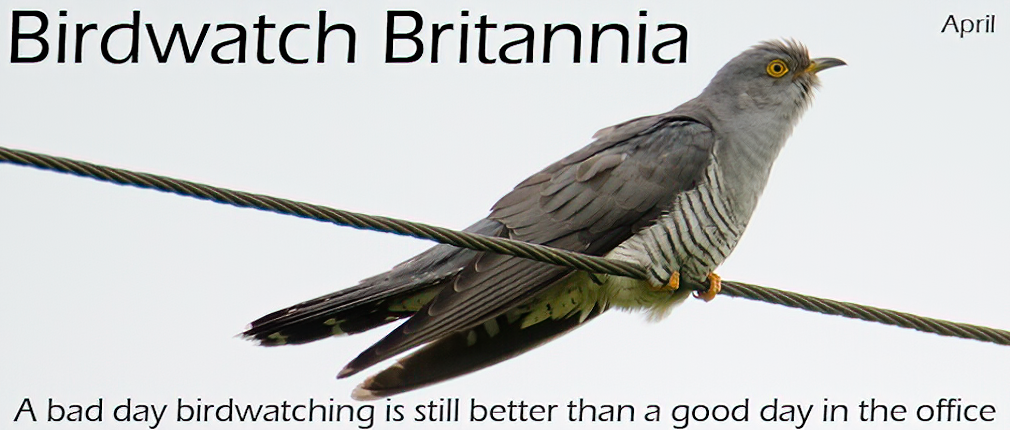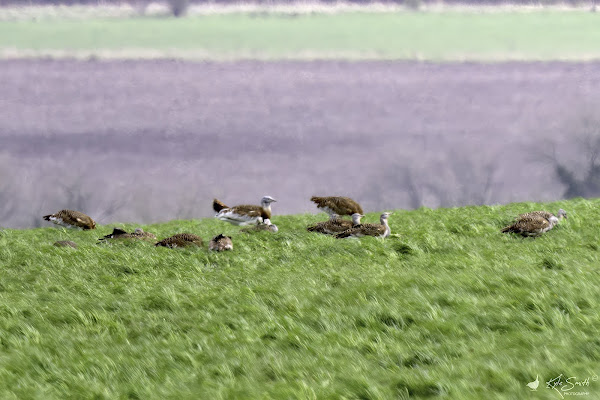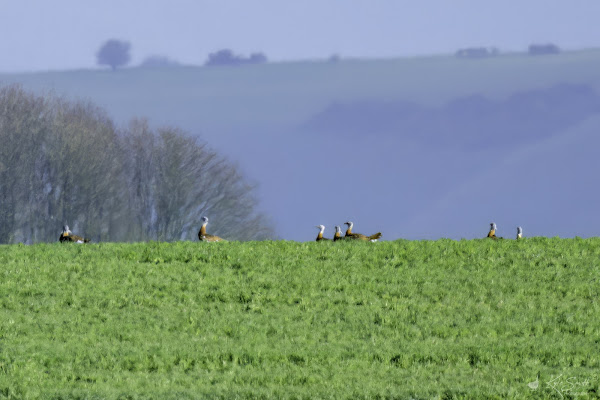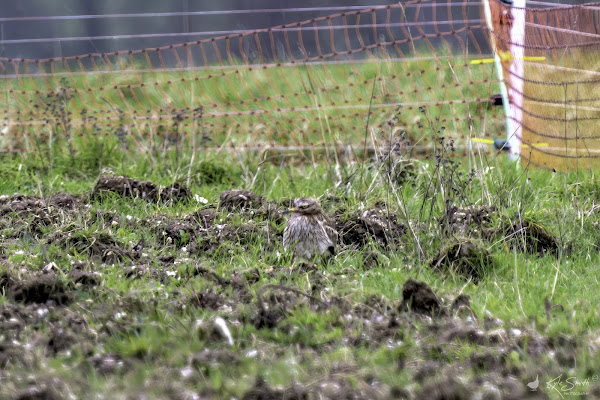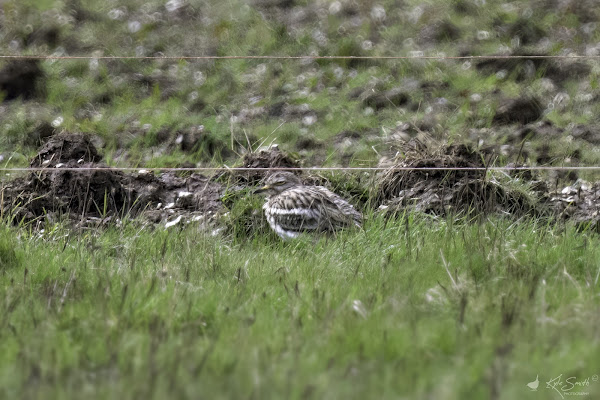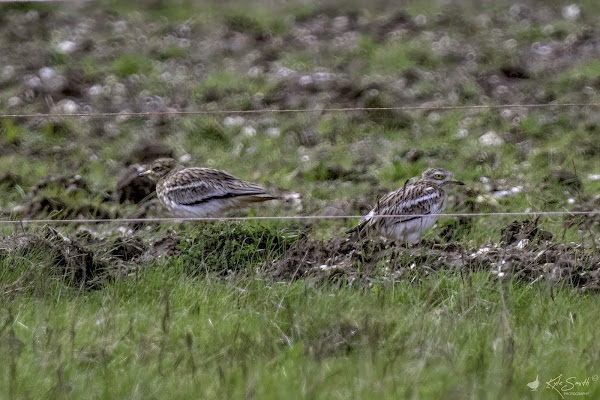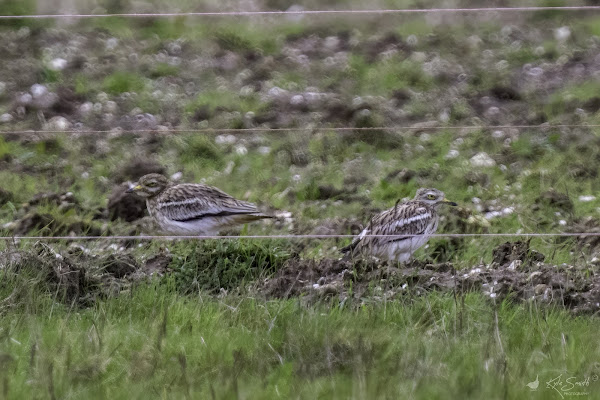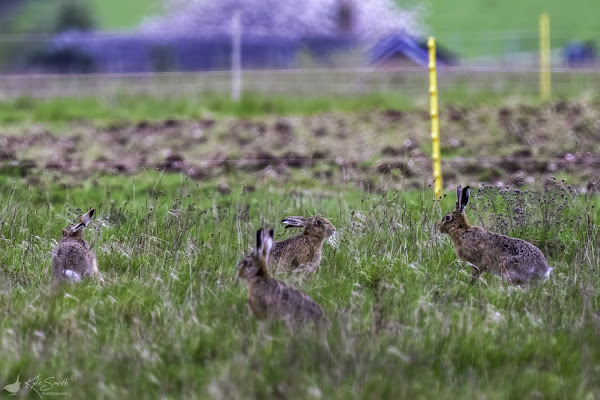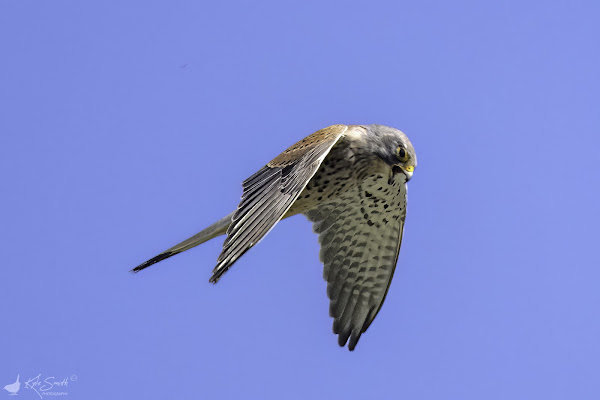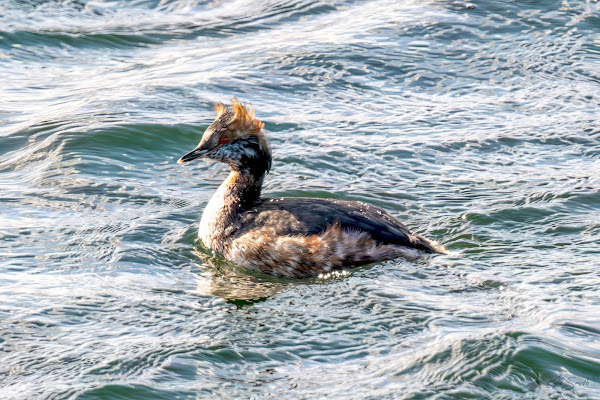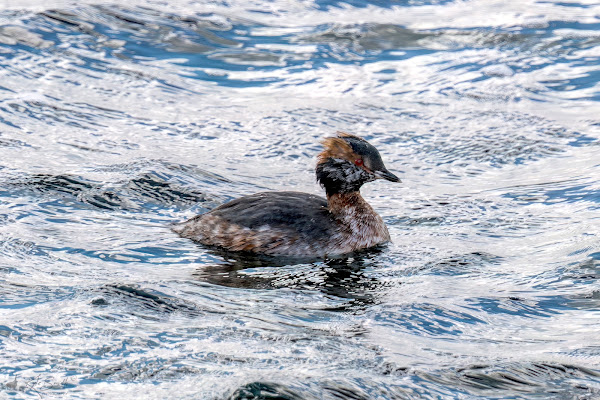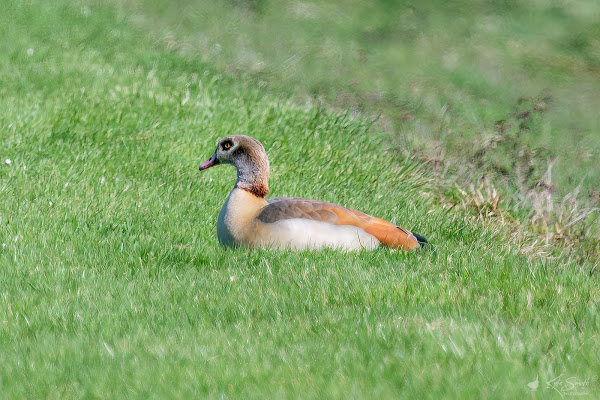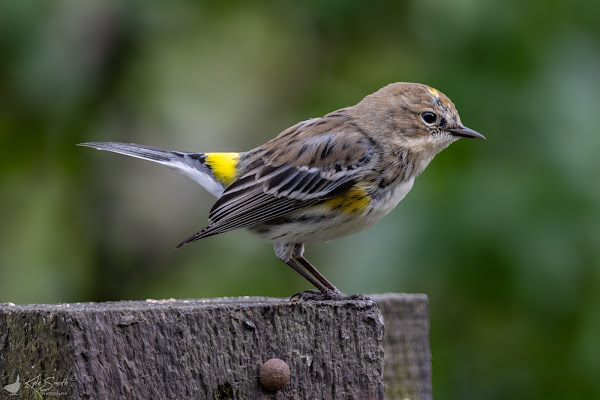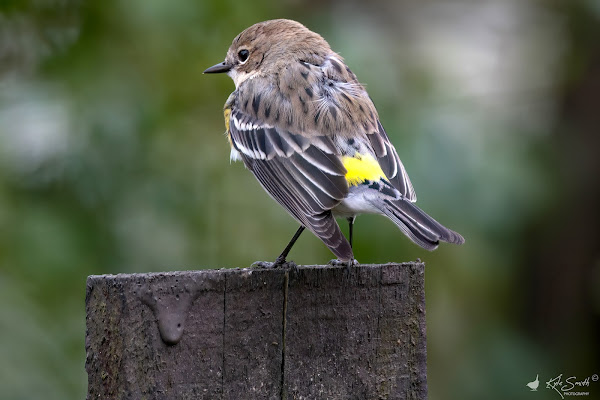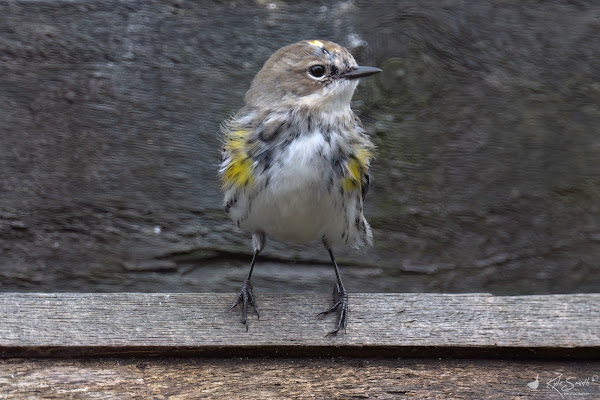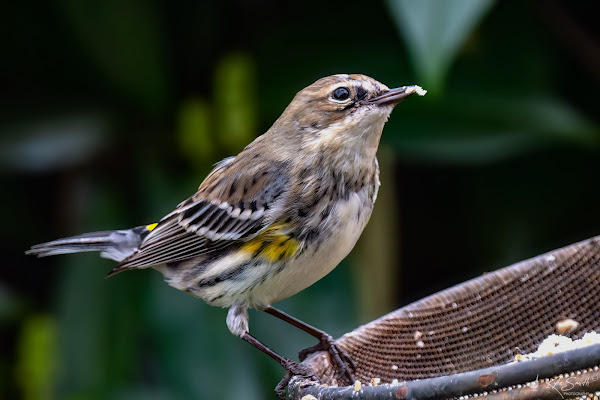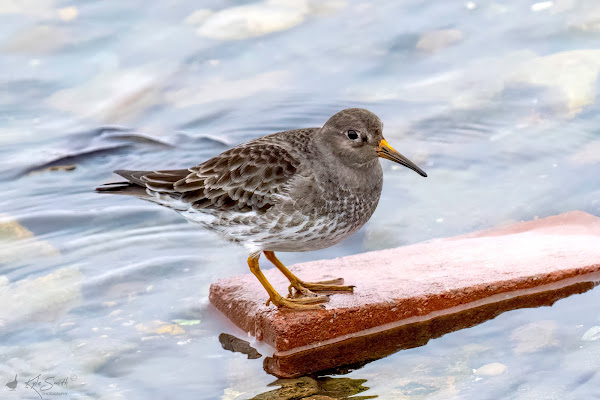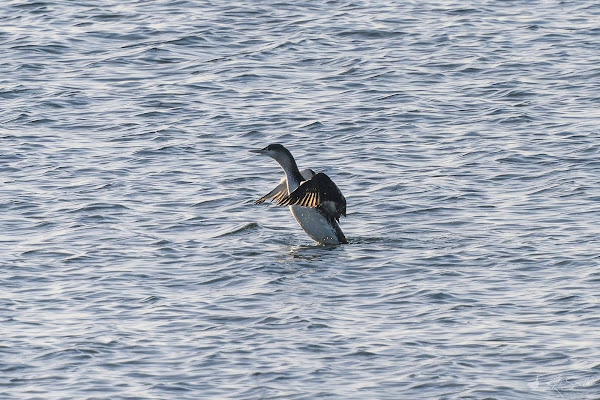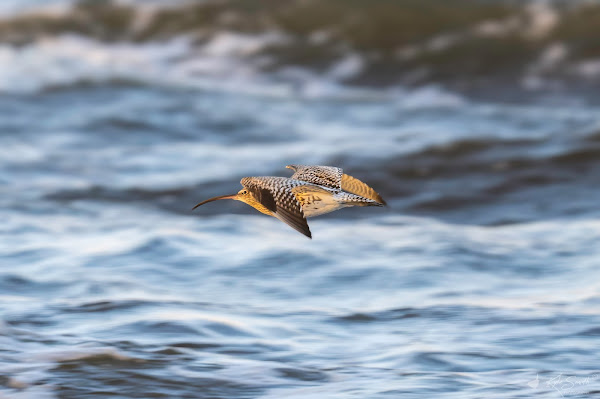I was scheduled to have lunch with some friends on Saturday to celebrate a birthday and so I asked Kev @kev07713 if we could perhaps bird on Friday instead, as it was a holiday for the Easter weekend. Discussing where we might go, and with the weather forecasting mixed conditions, some options were closer to home. Then he mentioned that his sister Karen @hobbylovinglife and her partner Dean @worlebirder were planning on visiting Wiltshire to see stone curlews and the great bustards - it has been seven or eight weeks since I'd seen them and so suggested that perhaps it would be nice to join them. The arrangements made, we would join them on Salisbury Plain on a track overlooking the valley where locating the great bustards is perhaps easiest - they are not hard to spot unless hidden down in a tall crop - they are the world's heaviest flying bird.
Historically, great bustards were widespread across Europe and Asia, but due to hunting and habitat loss, their populations have declined significantly. Globally, the Great Bustard is in peril, categorised as ‘Vulnerable’ on the IUCN Red List of Threatened Species. It's estimated that there are fewer than 35,000 of these magnificent birds left in the wild. In the UK, the great bustard was extinct as a breeding species by the early 19th century. There has now been an effort to reintroduce them to the UK, particularly on Salisbury Plain; a vast expanse of chalk grassland and heathland, making it an ideal location.
Reintroduction efforts have involved bringing birds from European countries where populations still exist, such as Spain and Russia, and these birds released in the hope that they will establish breeding populations once again. Since the first releases in 2004, the population has gradually increased (currently a population of around 100 birds) and monitoring efforts have recorded successful breeding. A Great Bustard Group was created in 1998 with the aim of establishing a self-sustaining population in the wild, a target they achieved in 2019. They offer tours to see these magnificent birds, but it is possible to see them independently.
We'd come along the track before but there had been some work on it and so it was with regret than I didn't pay attention to the clearance my car would have over some of the materials - I heard a nasty sound as the stones tore away some of the plastic front engine under cover - bugger. Something I'll need to sort out in the coming week.
Kev and I arrived first and set up on the hillside overlooking the valley, picking out red-legged partridge and hearing skylark and corn buntings calling nearby. A short scan of the ridge ahead revealed eight great bustards feeding just beyond. In under ten minutes Karen and Dean arrived from the other direction, having entered by the farm road. They joined us looking over at the birds and scanning the adjoining fields.
A corn bunting dropped onto the left-hand fence line and perched in the early morning sun giving an opportunity for a photo. Corn bunting is a bird species that has faced significant declines across Europe due to habitat loss and changes in agricultural practices. Salisbury Plain, with its extensive grassland and agricultural areas, provides very suitable habitat and each time we visit, we are always treated with good views.
Other than seeing red kite and kestrels there were limited other species of note and so we drove further along the track to see the bustards from a different angle and as they had retreated a little over the brow of the hill. When we stopped, what was that coming over the hill? (The Automatic) - now 30 bustards! A great sight.
We'd spent a while admiring these birds and now made our way to RSPB Winterbourne as it is a great place to have views of stone curlews.
The stone curlew, is a distinctive bird species known for its large eyes and cryptic plumage. RSPB Winterbourne Downs is a key site and with increasing breeding success, marks the fruition of decades of dedicated conservation endeavours. This is where we visit to enjoy this species each spring as they enter the breeding season, and when they are at their most visible. They are unusual for wading birds, as you're most likely to find them on dry, stony ground. Eurasian Stone-curlews are seasonal visitors to the UK during spring and summer, nesting on sandy heaths, well-grazed grasslands, and arable fields. During winter, they migrate to southern Europe and northern Africa, with some British individuals documented as far south as Sierra Leone.
Stone curlews nest on the ground, relying on their camouflage to keep them safe. During the day, they remain motionless, making them extremely difficult to spot but as dusk approaches, they become more active using their large eyes to hunt beetles, worms, and other invertebrates, even in dim light. Not something I've witnessed though.
As soon as we'd parked up, walked up the slope and reached a viewing screen, Karen was onto a bird in a flash. Once she'd put us all on it, we admired the bird, and it was doing just what it said on the tin - sitting motionless and only visible as we were looking up the slope and it was proud of the clods of earth.
We didn't stop long as we could see at dog walker on the treeline beyond our bird and guessed there might be better views further up the track.
Having managed to see this bird better we decided to investigate the field on the other side of the trees, where there were apparently chances of more stone curlews. We looked from where we entered but drew a blank. Kev and Dean were some way back and so when the rain started to fall, Karen and I stayed under the cover of the trees. Soon I decided to go in search of the Lapwing Hide/Screen, stopping occasionally to see if I could see any of our target species. On the third stop I found one, two and then three - I called Karen and we watched as the birds eventually close the gap between them, allowing a photo with two together. We were thrilled as two displayed and called briefly. The call of is a distinctive and haunting sound, often described as a series of plaintive, wailing whistles or eerie, bubbling trills.
Out in front of us we had four hares chasing around, at one point boxing - I was a bit annoyed that I missed a photo of that.
We wandered down the track in the trees and found the Lapwing Screen, Kev and Dean. They'd also been able to see the birds from here and had videos of the two birds together, but unfortunately not when they were calling. Kev's here and Dean's here. The rain came and went, but the wind was constant. A couple of other birders joined us - after we put them on the birds we worked our way back to the car, picking out the single bird from earlier, but now further into the field. Beside us a kestrel hunted and on one attempt it came up with something in its talons, but we couldn't work out what it was, even when it landed on a distant post.
We made it back to the car park and heard a stone curlew call out in the field and amongst the sheep. Eventually Kev picked it out in a large stony hole - sheep and rooks walking through. We had lunch at a picnic bench and listened as the stone curlew called again - this time Dean picking it up on his scope.
A terrific day out - shame about the underside of the car.
Year list: 162.
